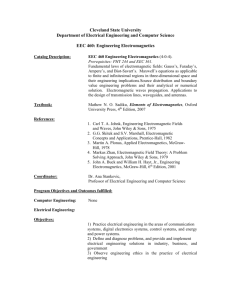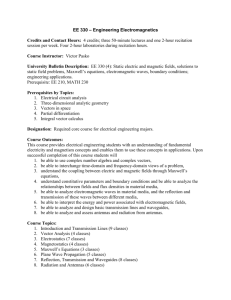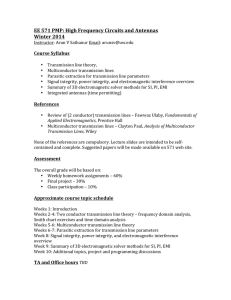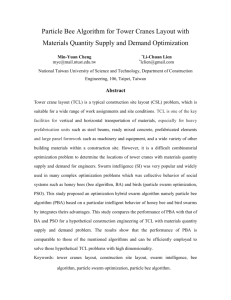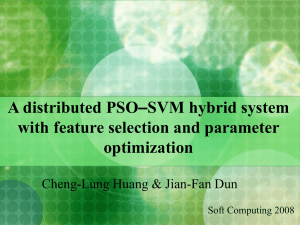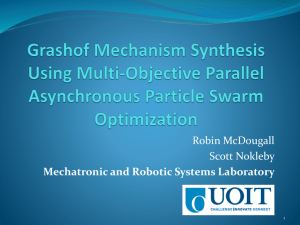Genetic Algorithms (GA) and Particle Swarm Optimization (PSO)
advertisement
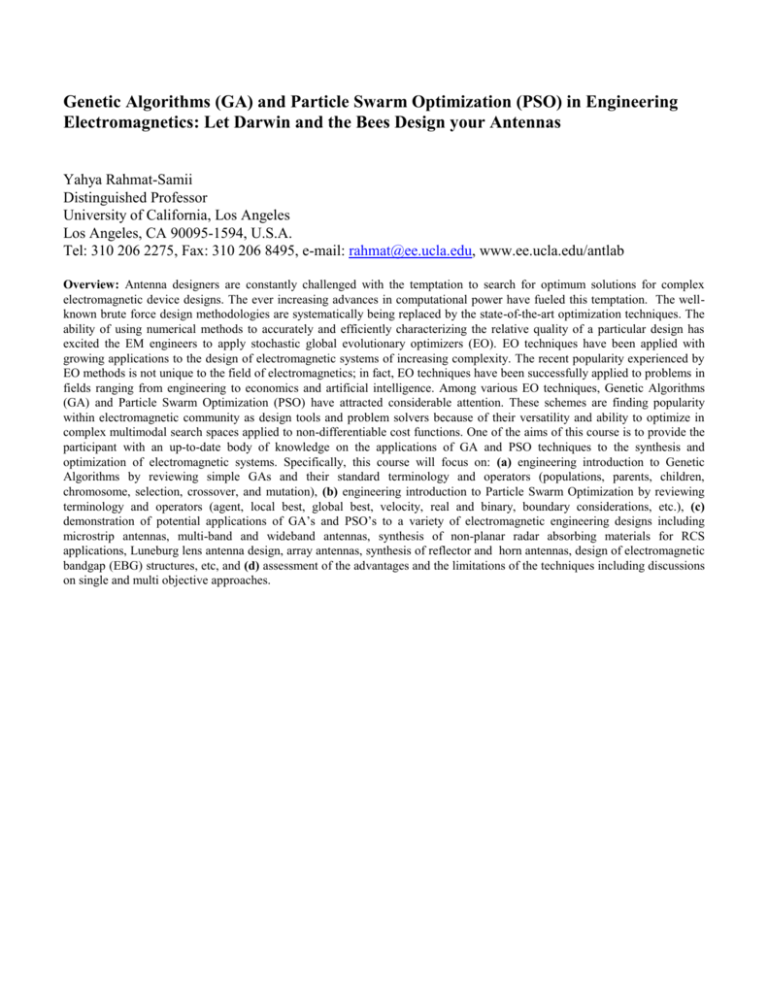
Genetic Algorithms (GA) and Particle Swarm Optimization (PSO) in Engineering Electromagnetics: Let Darwin and the Bees Design your Antennas Yahya Rahmat-Samii Distinguished Professor University of California, Los Angeles Los Angeles, CA 90095-1594, U.S.A. Tel: 310 206 2275, Fax: 310 206 8495, e-mail: rahmat@ee.ucla.edu, www.ee.ucla.edu/antlab Overview: Antenna designers are constantly challenged with the temptation to search for optimum solutions for complex electromagnetic device designs. The ever increasing advances in computational power have fueled this temptation. The wellknown brute force design methodologies are systematically being replaced by the state-of-the-art optimization techniques. The ability of using numerical methods to accurately and efficiently characterizing the relative quality of a particular design has excited the EM engineers to apply stochastic global evolutionary optimizers (EO). EO techniques have been applied with growing applications to the design of electromagnetic systems of increasing complexity. The recent popularity experienced by EO methods is not unique to the field of electromagnetics; in fact, EO techniques have been successfully applied to problems in fields ranging from engineering to economics and artificial intelligence. Among various EO techniques, Genetic Algorithms (GA) and Particle Swarm Optimization (PSO) have attracted considerable attention. These schemes are finding popularity within electromagnetic community as design tools and problem solvers because of their versatility and ability to optimize in complex multimodal search spaces applied to non-differentiable cost functions. One of the aims of this course is to provide the participant with an up-to-date body of knowledge on the applications of GA and PSO techniques to the synthesis and optimization of electromagnetic systems. Specifically, this course will focus on: (a) engineering introduction to Genetic Algorithms by reviewing simple GAs and their standard terminology and operators (populations, parents, children, chromosome, selection, crossover, and mutation), (b) engineering introduction to Particle Swarm Optimization by reviewing terminology and operators (agent, local best, global best, velocity, real and binary, boundary considerations, etc.), (c) demonstration of potential applications of GA’s and PSO’s to a variety of electromagnetic engineering designs including microstrip antennas, multi-band and wideband antennas, synthesis of non-planar radar absorbing materials for RCS applications, Luneburg lens antenna design, array antennas, synthesis of reflector and horn antennas, design of electromagnetic bandgap (EBG) structures, etc, and (d) assessment of the advantages and the limitations of the techniques including discussions on single and multi objective approaches.



